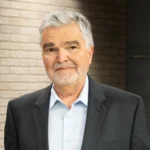Is Long COVID the New Chronic Fatigue Syndrome?

PREMIUM CONTENT for MEMBERS ONLY
“COVID-19 infection has also taken a serious toll on the nervous system.”
By now the COVID-19 pandemic has claimed as many American lives as World War I, the Vietnam War, and the Korean War combined, and despite the impressive reduction in infection and death rates in the US since the beginning of the year, this ravaging diseases is far from over. While most of the COVID related deaths are due to the well-known pulmonary complications of the coronavirus, the infection has also taken a serious toll on the nervous system. In addition to the acute, severe, but generally transient neurological manifestations ranging from encephalitis and cognitive impairment to stroke, milder persistent symptoms are reported by many survivors, causing pervasive yet subtle cognitive, behavioral, and psychological problems.
“50% to 80% of patients continue to have bothersome symptoms three months after the onset of COVID-19.”
Although many people who have recovered from COVID-19 can resume their daily lives without difficulty — even if they have some deficits in attention — there are a number of patients who may experience difficulties in meeting their regular responsibilities at home or at work. Published studies (see here and here) and surveys conducted by patient groups indicate that 50% to 80% of patients continue to have bothersome symptoms three months after the onset of COVID-19 — even after tests no longer detect virus in their body. The most common symptoms are fatigue, body aches, shortness of breath, difficulty concentrating, brain fog, inability to exercise, headache, and difficulty sleeping. Since COVID-19 is a new disease that first appeared in December 2019, we have no information on long-term recovery rates. Tens of thousands of people in the United States are reporting lingering symptoms following COVID-19. In medical jargon, such patients are called post-COVID “long haulers” and the condition they are suffering from is referred to as “long COVID,” although other names are being proposed.
“Long COVID is likely the same or very similar to Chronic Fatigue Syndrome.”
Long before the COVID pandemic, I have seen many patients complaining of identical symptoms which at the time were referred to as Chronic Fatigue Syndrome, a challenging medical problem for which no effective treatment exists. Dr. Anthony Fauci, director of the National Institute of Allergy and Infectious Diseases, has speculated that long COVID likely is the same as or very similar to myalgic encephalomyelitis/chronic fatigue syndrome (ME/CFS).
ME/CFS can be triggered by other infectious illnesses — such as mononucleosis, Lyme disease, or severe acute respiratory syndrome (SARS), another coronavirus disease. Before the pandemic, the National Academy of Medicine estimated that as many as 2.5 million people in the US are living with ME/CFS. It has been speculated by Harvard’s Dr. Anthony L. Komaroff in an article in the journal Frontiers in Medicine that the pandemic could well double that number in the next year.
In a previous post, I have discussed the possible role of an altered gut microbiome (dysbiosis) in increasing the risk for developing COVID-19, in particular of severe COVID symptoms. A recent publication by a research group from Hong Kong, several gut microbes with known immunomodulatory potential such as Faecalibacterium prausnitzii, Eubacterium rectale and bifidobacteria were underrepresented in patients and remained low in samples collected up to 30 days after disease resolution. These microbial changes were associated with markers of disease severity concordant with elevated concentrations of inflammatory molecules. Gut microbiome alterations have been reported in both patients with ME/CFS and with COVID-19, suggesting a possible role of compromised interactions of gut microbial taxa with the gut based immune system. These alterations may be a risk factor for the development of long-COVID.
“Currently, we can’t accurately predict who will become a long hauler.”
Currently, we can’t accurately predict who will become a long hauler. Both patients with initially mild COVID-19 symptoms as well as those severely ill can develop lingering symptoms (article in Science). However, based on current knowledge continued symptoms are more likely to occur in people over age 50, people with two or three chronic co-morbid illnesses (such as metabolic syndrome or chronic cardiovascular disease) and, possibly, people who became very ill with COVID-19, all individuals with a likely state of dysbiosis. As I have previously discussed in this blog and in great detail in The Gut Immune Connection, these are all conditions associated with a compromised gut microbiome resulting in chronic, inappropriate immune system activation. Increased activation of the gut associated immune system can spread throughout the body to other organs, including the brain, leading to neuroinflammation.
“Long Covid may carry the risk of facilitating the development of Alzheimer’s disease later on in life.”
We can only guess, how many people may develop long COVID. By late March 2021, more than 30 million Americans were confirmed to have been infected by the virus, and the numbers are still climbing. Probably many more were never diagnosed. Early studies indicate that one in ten people with COVID-19 may develop long COVID that lasts at least a year. Based on these numbers, we can speculate that we will be confronted with a major public health crisis related to a symptom complex with devastating impact on patients’ lives and without known effective therapy and which may even carry the risk of facilitating the development of Alzheimer’s disease later on.

Emeran Mayer, MD is a Distinguished Research Professor in the Departments of Medicine, Physiology and Psychiatry at the David Geffen School of Medicine at UCLA, the Executive Director of the G. Oppenheimer Center for Neurobiology of Stress and Resilience and the Founding Director of the Goodman-Luskin Microbiome Center at UCLA.